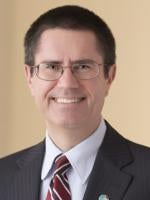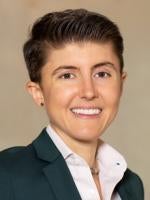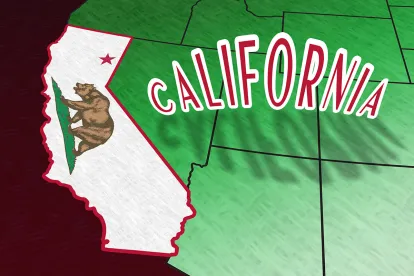AB 1867 was signed into law by Governor Newsom on September 9, 2020. The purpose of the bill is to eliminate gaps in coverage so that many more employee have access to paid sick days if they are exposed to or test positive for COVID-19 in 2020. This means that the new law applies to individuals employed at companies too big to qualify under the Families First Coronavirus Relief Act (“FFCRA”) passed by Congress in March and it also applies to individuals who may have been designated as essential, such as health care workers, and therefore exempt under the FFCRA. Employers who took advantage of designating some employees as exempt under the FFCRA may want to revisit that choice because, unlike FFCRA leaves, AB 1867 does not include a tax credit to offset the cost of providing the leave.
Who Is Entitled to Leave?
Beginning September 19, 2020, private employers with 500 or more employees nationwide (as well as certain health care providers and emergency responders), must provide employees supplemental paid sick leave if they are unable to work because:
-
They are subject to a federal, state, or local quarantine or isolation order related to COVID-19;
-
They were advised by health care provider to self-quarantine or self-isolate due to concerns related to COVID-19; or
-
Their employer prohibits them from working due to health concerns related to the potential transmission of COVID-19.
The law only applies to employees who must leave their home for work.
How Much Supplemental Paid Sick Leave Does an Employee Get?
It depends on whether an employee has a regular or variable schedule and how many hours an employee was scheduled to work in the two weeks preceding the leave.
-
Employees who are regarded by their employer as “full time” or who were scheduled to work and did work an average of 40 hours per week in the two weeks preceding the date of taking the leave are entitled to 80 hours of leave (but see active firefighter exception below).
-
Employees who are not regarded as full time and with a regular schedule who work less than 80 hours in the preceding two weeks are entitled to the number of hours they were scheduled to work in the two weeks preceding the date they take leave.
-
Employees with variable schedules are entitled to 14 times the average number of hours they worked each day in the six months preceding the date they took leave. If they have been an employee less than six months, the total length of their employment is used, unless they have been employed 14 days or less, in which case the total number of hours worked must be used.
-
Active firefighters scheduled to work more than 80 hours for the two weeks preceding the date the worker took leave are entitled to leave equal to the total number of hours they were scheduled to work in those two weeks, even if greater than 80 hours.
The employee gets to determine how many hours of leave to use. The employer must make the leave available immediately upon the employee’s oral or written request.
If an employer has already independently provided COVID-19 paid sick leave to employees since March 4, 2020 the leave provided counts toward achieving the minimum hours and rate of pay set forth in this article. If the leave was provided at the correct rate of pay and for the minimum number of required hours, then additional leave to satisfy this law is not required. If the employer provided COVID-19 paid sick leave but at a lower rate of pay, the employer can retroactively provide supplemental pay to that covered worker in an amount equal to or greater than that required. Note, to qualify, the COVID-19 paid sick leave must have been in addition to any other regular employer sick leave programs. For example, PTO used pursuant to an employer’s normal time off program would not qualify as an offset against the new California COVID-19 paid sick leave.
What is the Rate of Pay for Supplemental Paid Sick Leave?
The amount of leave to be paid is the highest of:
-
The employee’s regular rate of pay for the last pay period (including amounts subject to any applicable collective bargaining agreement;
-
State minimum wage; or
-
Local minimum wage.
The maximum amount to be paid is $511 per day and $5,110 total.
Can the Employer Require an Employee to Use Other Leave Instead?
No. An employee cannot be required to use any other paid or unpaid leave or time off, including vacation time instead or before this COVID-19 supplemental paid sick leave option.
Record Keeping Requirements
By September 16, 2020, the California Labor Commissioner is required to publish a model notice for employers to post at the workplace and disseminate via email to employees who do not regularly report to the workplace.
Additionally, each pay period the employer must provide employees written notice of the amount of supplemental paid sick leave available on either an itemized wage statement or separate writing. Failure to do so will result in a $50 penalty for the initial pay period and $100 per employee for each subsequent violation, not to exceed an aggregate total of $4,000.
Food Sector Employees
AB 1867 largely codifies the April 16, 2020 Executive Order that provides COVID-19 supplemental paid sick leave to food sector workers, with a few caveats. Additionally, AB 1867 requires that food sector workers be permitted to wash their hands every 30 minutes, and additionally if needed.
Enforcement
The California Labor Commissioner will enforce the law. There will be a $100 penalty for failing to post the poster informing employees of the law. There will be an administrative penalty equal to the greater of three times the dollar amount of leave withheld or $250, up to an aggregate total of $4,000. If the violation causes other harm or violates other rights, the administrative penalty must include an additional $50 for each day the violation occurred, not to exceed an aggregate total of $4,000.
Does This Law Expire?
Yes. It is only effective until December 31, 2020 unless Congress extends the Families First Coronavirus Response Act in which case the California program will also be extended.





 />i
/>i
